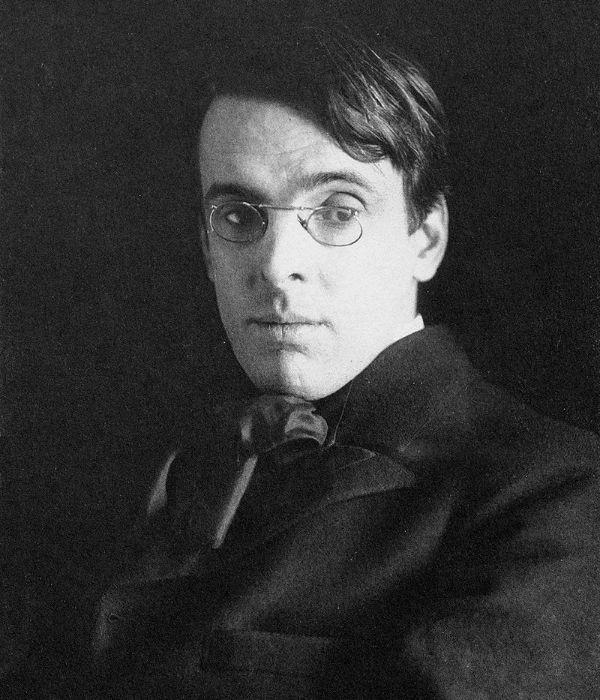Today's Birthday
William Butler Yeats1865–1939, Irish poet and playwright, born in Dublin.
The greatest lyric poet that Ireland has produced and one of the major figures of 20th-century literature, Yeats was the acknowledged leader of the Irish literary renaissance.
Early Life
Son of the painter John Butler Yeats, William studied painting in Dublin (1883–86). As a boy he attended school in London and spent vacations in County Sligo, Ireland, which was the setting for many of his poems. He became fascinated by the legends of Ireland and by the occult. His first work, the drama Mosada (1886), reflects his concern with magic, but the long poems in The Wanderings of Oisin (1889) voiced the intense nationalism of the Young Ireland movement.
Poetry: First Period
Yeats's verse can be divided into two periods, the first lasting from 1886 to about 1900. The poetry of this period indicates Yeats's debt to Spenser, Shelley, and the Pre-Raphaelites. It centers on Irish mythology and themes and is mystical, slow-paced, and lyrical. Among the best-known poems of the period are “Falling of Leaves,” “When You Are Old,” and “The Lake Isle of Innisfree.” Yeats edited William Blake's works in 1893, and his own Poems were collected in 1895.
Drama and Prose
Yeats's efforts to foster Irish nationalism were inspired for years by Maud Gonne, an Irish patriot for whom he had a hopeless passion. In 1898 with Lady Augusta Gregory, George Moore, and Edward Martyn he founded the Irish Literary Theatre in Dublin; their first production (1899) was Yeats's The Countess Cathleen (written 1889–92). Yeats helped produce plays and collaborated with Lady Gregory on the comedy The Pot of Broth (1929) and other plays. The Irish Literary Theatre produced several of Yeats's plays including Cathleen Ni Houlihan (1902), and—after the Abbey Theatre was opened—The Hour Glass (1904), The Land of Heart's Desire (1904), and Deirdre (1907). Yeats's writing prose tales were collected in The Celtic Twilight (1893) and in the symbolic Secret Rose (1897).
Poetry: Second Period
Yeats's poetry deepened as he grew older. In the verse of his middle and late years he renounced his early transcendentalism; his poetry became stronger, more physical and realistic. A recurring theme is the polarity between extremes such as the physical and the spiritual, the real and the imagined. Memorable poems from this period include “The Second Coming,” “The Tower,” and “Sailing to Byzantium.” Yeats initiated his second period in such volumes as In the Seven Woods (1903) and The Green Helmet and Other Poems (1910). In 1917 he married Georglie Hyde-Lees, and his occultism was encouraged by his wife's power of automatic writing. His prose work A Vision (1937; privately printed 1926) is the basis of much of his poetry in The Wild Swans at Coole (1917) and Four Plays for Dancers (1921).
Later Life and Work
Yeats ultimately became a respected public figure, a member (1922–28) of the Irish senate, and winner of the 1923 Nobel Prize in Literature. Some of his best work was his last, The Tower (1928) and Last Poems (1940). All of Yeats's work shows interesting and important revisions from earlier to later versions (see The Variorum Edition of his poems, ed. by Peter Allt and Russell R. Alspach, 1957).
Bibliography:
A Bibliography of the Writings of W. B. Yeats was prepared by Allan Wade (2d rev. ed. 1957). See Yeats's Autobiography (3 vol. in one, 1938), Letters (ed. by Allan Wade, 1954), Memoirs (ed. by Denis Donoghue, 1973), Collected Poems (enl. ed. 1951), Collected Plays (enl. ed., reissued 1952), Mythologies (1959), Senate Speeches (ed. by D. R. Pearce, 1960), and Essays and Introductions (1961).
Who2. Copyright © 1998-2006 by Who2?, LLC. All rights reserved.
Also Born on June 13
- Mary Antinwriter, activist (1881)
- Dorothy L. Sayerswriter (1893)
- Christoartist (1935)
Who Shares Your Birthday?
The Day You Were Born
The Year You Were Born











